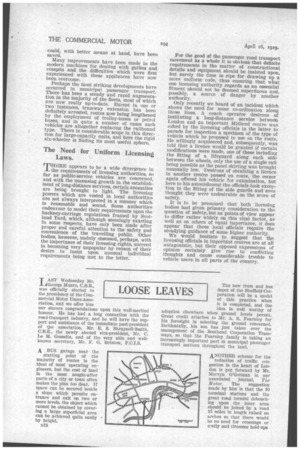The British Makers' Contribution to Municipal Motorization.
Page 87

Page 88

If you've noticed an error in this article please click here to report it so we can fix it.
THERE can now be but little excuse for a municipality to be behind the times in the adoption of modernized means for the many branches of its work for which motor vehicles and appliances can be utilized to advantage. The British manufacturers of municipal motors have made remarkable advances during the past year or so, and that this is being realized, not only at home, but abroad, is proved by the steadily increasing demand for British products experienced in the latter direction, and for such divergent articles as refuse collectors, fireengines and road rollers.
Financial stringency has hitherto been the chief excuse here for the retention of ancient but unhonoured methods and means, but there is now little reason why this should be the ease, for the sacrifice in cleanliness and efficiency has not really effected a monetary saving. The motor vehicle and appliance—and in this term we include petrol, steam and electric machines —have been developed to such a high degree of perfection that their operation does not involve extra expenditure .except in prime cost, and in many instances that is soon covered.
No other country as advanced as is ours would permit the conditions which pertain in so many of our towns and cities and even in the Metropolis itself. Only recently, as we were proceeding along a main' thoroughfare, we were showered with dust from an open-type refuse wagon into which a bin was being dischtfrged. This is by no means an isolated instance, and is, to say the least, most objeetionable. The modern collector has hygienic coVers; in some types these are arranged to open automatically and prevent refuse from being scattered by the wind during loading. Other vehicles are now made with such a high degree of manceuvrability that they -can enter cul-de-sacs and narrow streets barred to the larger and less easily handled types.
Much has still to be done in connection with the provision of adequate equipment for combating fire, and this is particularly the case in rural areas, where the appliances available are so often lamentably ineffective, with the result that much valuable property is lost which could, with better means at hand, have been saved.
Many improvements have been made in the modern machines for dealing with gullies and cesspits and the difficulties which were first experienced with these appliances have now been overcome.
Perhaps the most striking developments have occurred in municipal passenger transport. There has been a steady and rapid augmentation in the majority of the fleets, most of which are now really up-to-date. Except in one or two instances, tramway extension has been definitely arrested, routes now being lengthened by the employment of trolley-buses or petrol buses, and in quite a number of cases such vehicles are altogether replacing the railbounci type. There is considerable scope in this direction for large-capacity units, and here the rigid six-wheeler is finding its most useful sphere.








































































































































































































